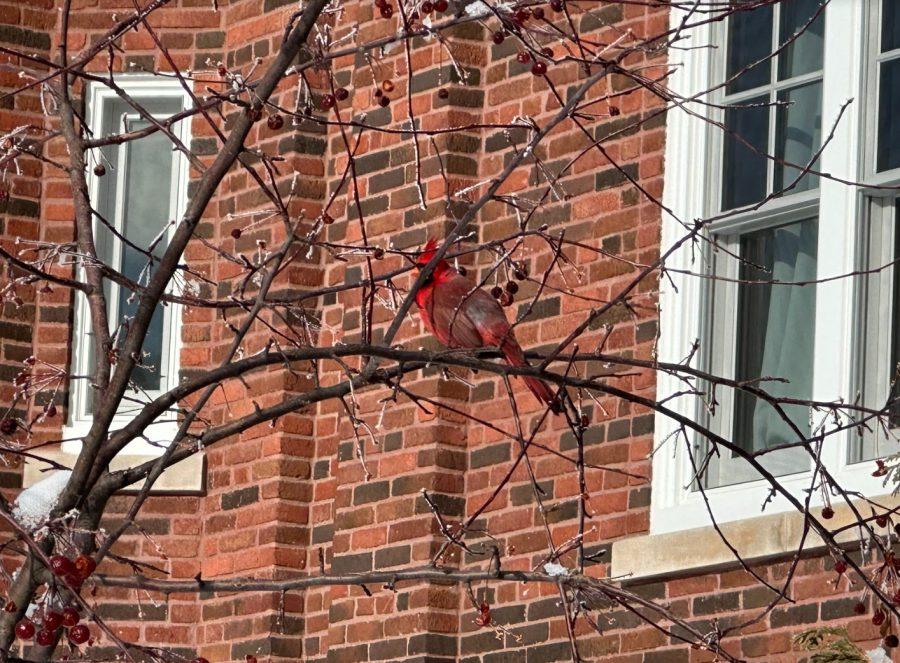It’s winter. It’s cold. It’s freezing your ears off every time you exit the building. The glaring white snow, though ethereal and enchanting, stings your eyes as you carefully tread between sheets of dangerously dark ice.
Mind your steps, but do look around if you ever hear a shrill, metallic chirp: There’s high chance that you may find a brilliantly red (or one of the “fifty” shades) ball of feathers perching comfortably in the branches, not unlike a plump berry that the tree has wished for but never had. Without the usual blockade of leaves and with the simple, snowy background, the Northern Cardinal (Cardinalis cardinalis) becomes even more conspicuous – a blessed dab of warm hue. However, bright red is not the only color of this hypothetical cardinal.
The red color of the cardinal comes from the carotenoids in its diet: red or purple fruits. The first shade – bright red – is seen in male cardinals with a diet high in carotenoids. Under normal circumstances, carotenoids coexist with other nutritious matters such as protein and fat, so being redder means that the male has good access to carotenoids. Thismeans that it has good access to nutrition and is healthy, which means – you guessed it – better offspring for females. However, there’s a caveat: The Amur Honeysuckle, a non-native and invasive shrub that the Arb Crew has been combating for years, has berries that are high in carotenoids but low in nutrition. Therefore, redder is not necessarily better! Many healthy males on a diet of native fruits are being outshone by comparatively unhealthy ones who binge on Amur Honeysuckle berries.
Female cardinals wear an inconspicuous brown, hiding them from predators. Yellow cardinals are rare occurrences; due to a genetic mutation, they cannot convert the carotenoids in their diet into the red pigment in their feathers. So, remember to take a picture if you see one! Then there are always the leucistic and albino ones who, also due to genetic mutation, produce less or no melanin (the dark pigment).
“Where are the remaining 46 shades?” I hear you ask. Well, counting the varying degrees of red in the first category…
For more information, visit:
Kestrel Liu ’23, for the Cole Student Naturalists












